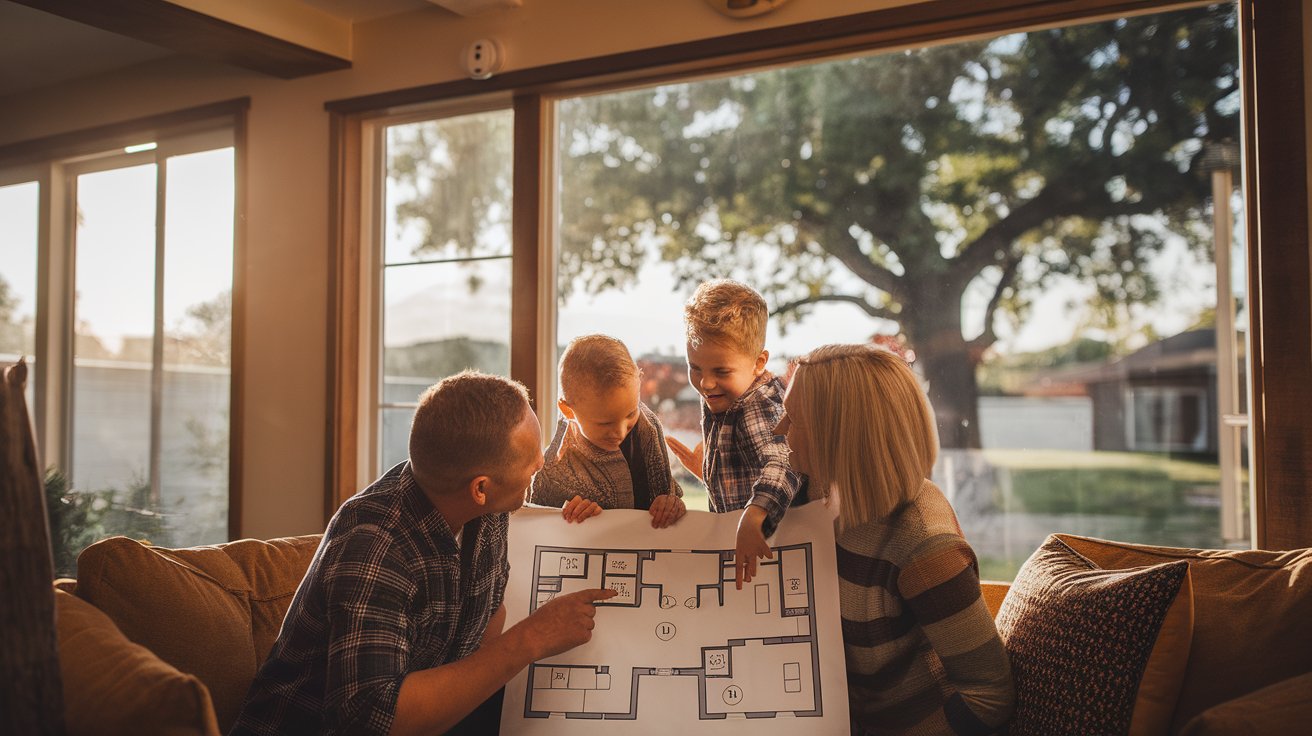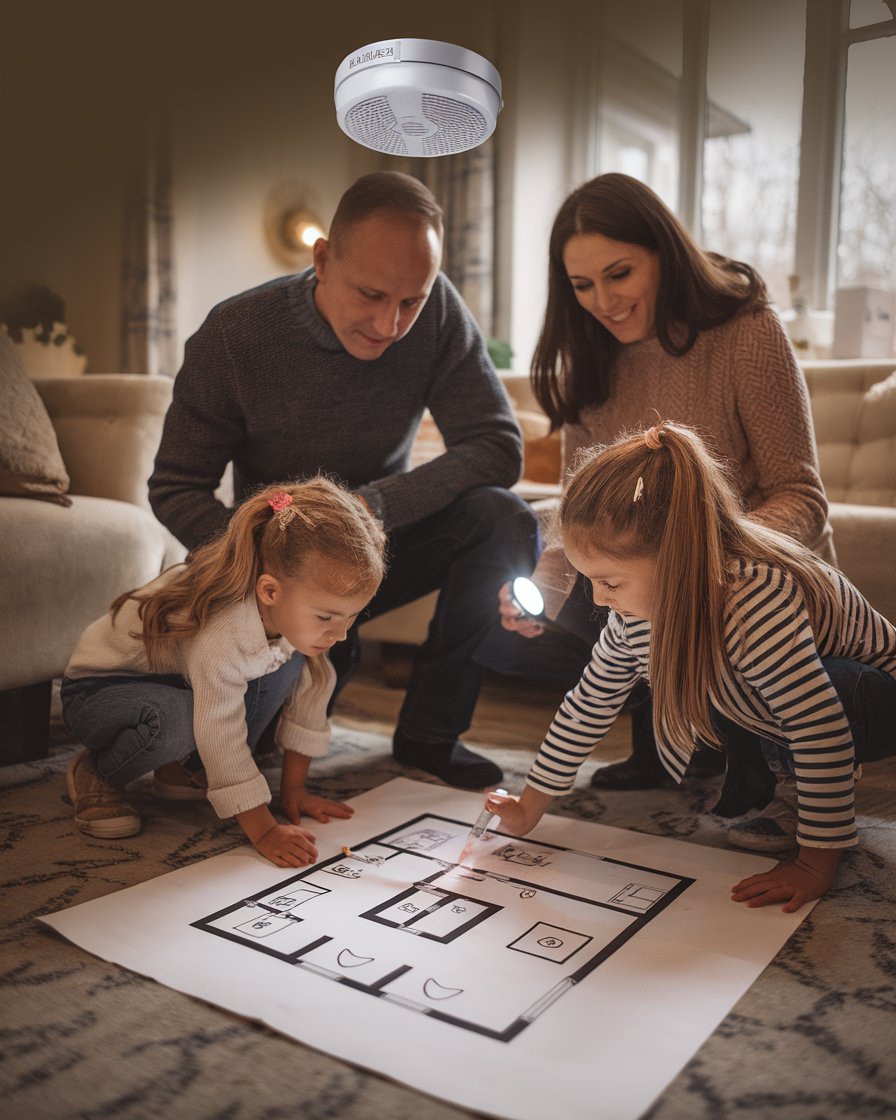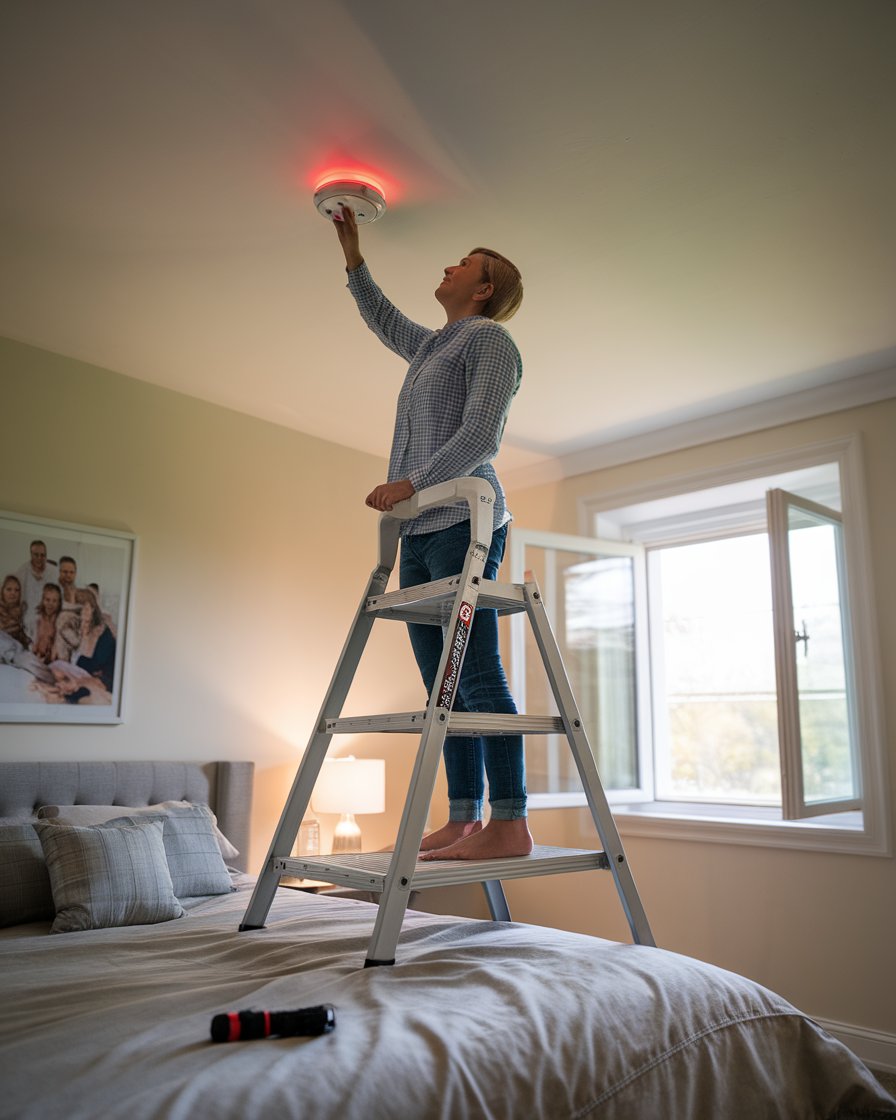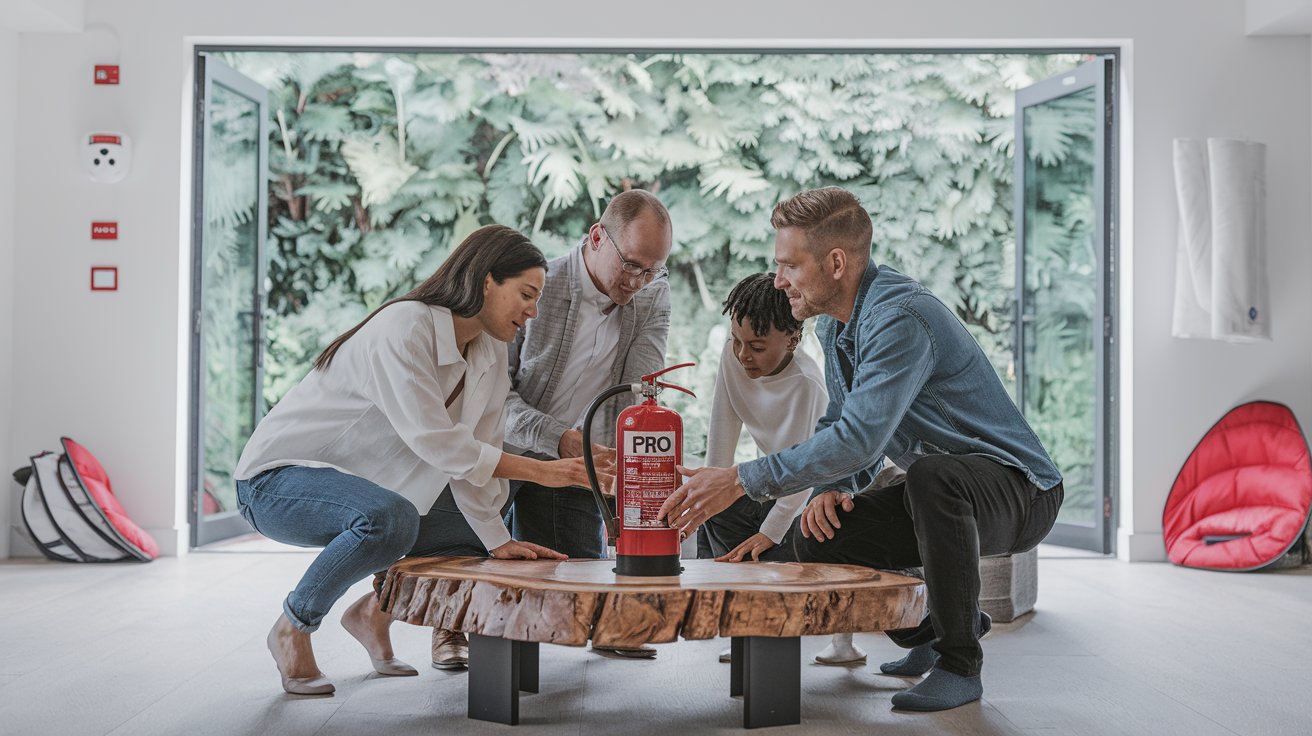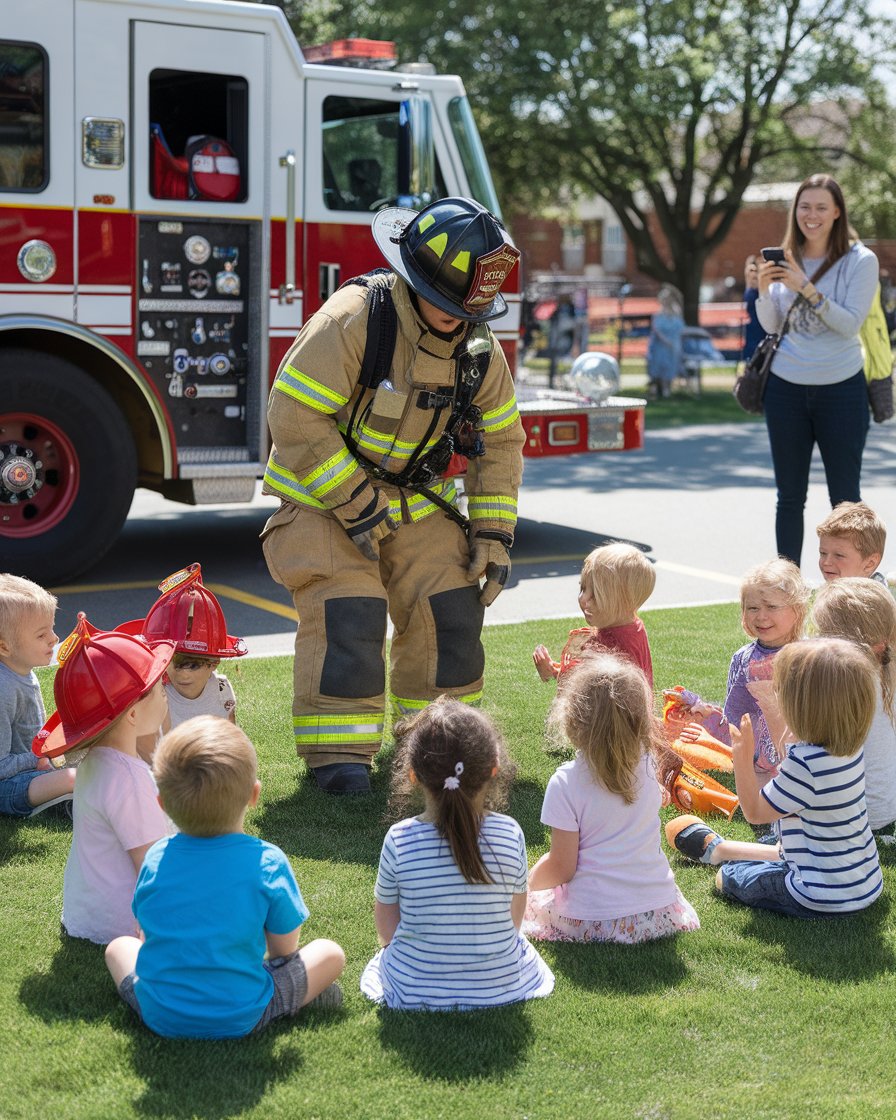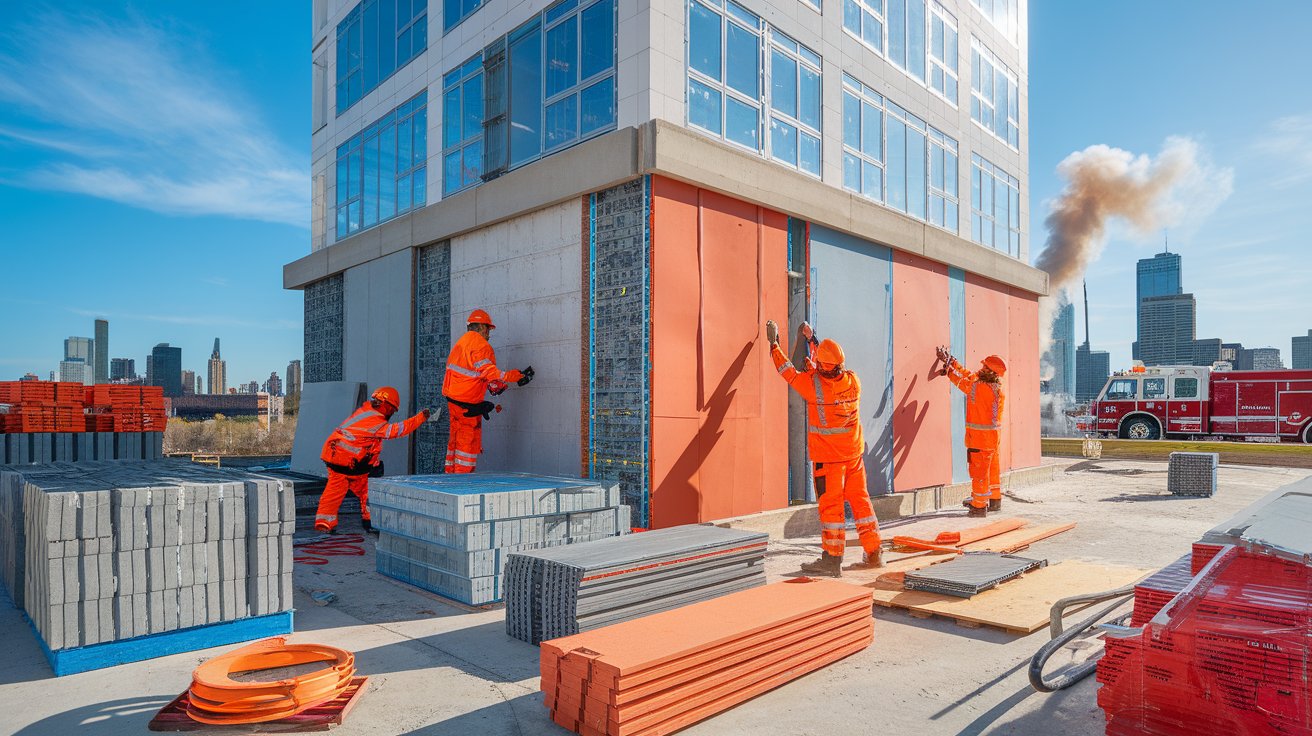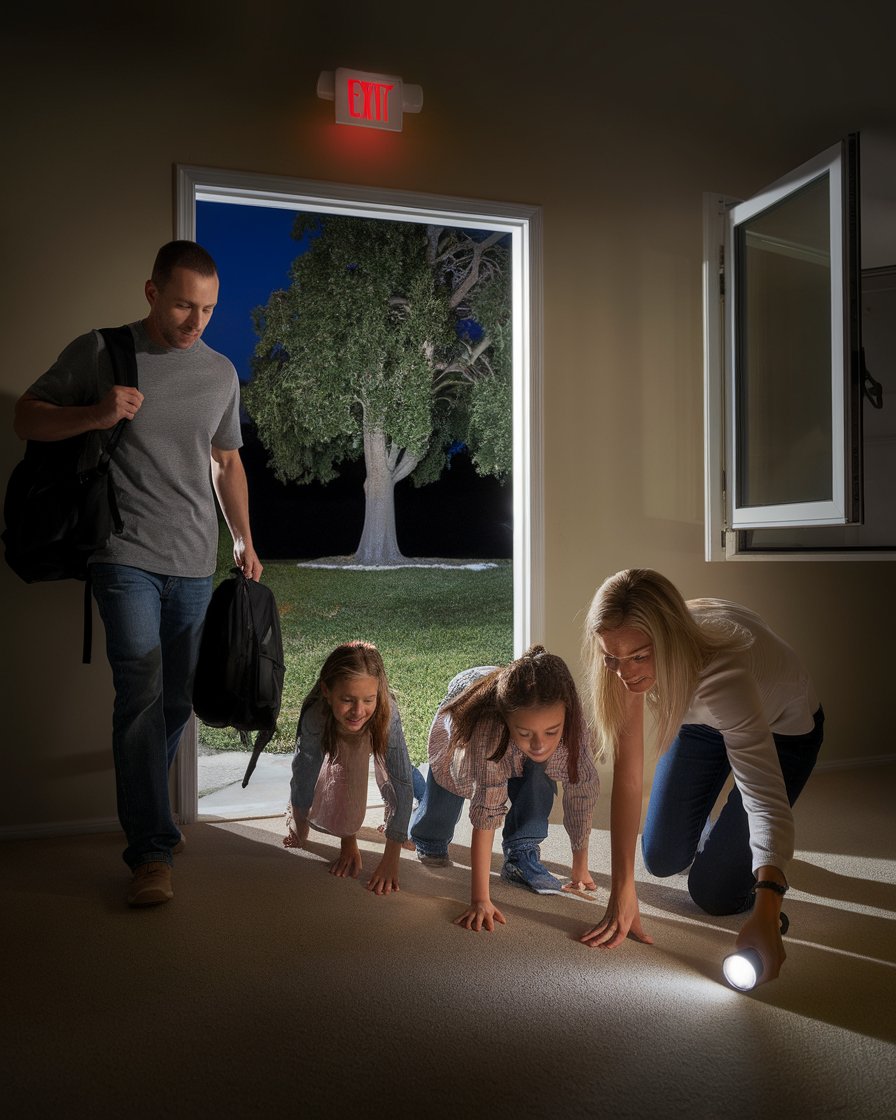Introduction
Creating a home fire escape plan is one of the most important steps you can take to protect your family. A fire can spread rapidly, often leaving just two minutes to escape safely. That’s why it’s crucial to practice your home fire escape plan regularly. By planning and practicing a home escape route, you ensure that everyone in the household knows the steps to take when the smoke alarm sounds. It’s also vital to make sure that every room has at least two ways out, such as doors and windows, and that these exits are not blocked by furniture or clutter.
In the event of a home fire, knowing the escape routes can be the difference between safety and disaster. Make sure everyone in your family knows where to go and how to get out quickly. Installing smoke alarms on every level of your home and having an outside meeting place are essential components of a well-practiced escape plan. When every second counts, having a well-thought-out plan could save lives.
Key Takeaways
Creating and practicing a home fire escape plan is critical for ensuring your family knows how to react when the smoke alarm sounds, giving them vital minutes to escape safely.
It’s essential to identify two escape routes from each room, ensuring that doors and windows are unblocked and easy to access during an emergency.
Designating an outside meeting point like a mailbox or tree ensures your family can gather safely after evacuating and perform a quick headcount.
Smoke alarms must be installed on every level of the home and tested regularly to provide early warnings and reduce the risk of injury or death during a fire.
Teaching children about fire risks and safety practices helps them understand the importance of staying away from hazards like matches and knowing how to escape.
Fire drills should be practiced at least twice a year to ensure every family member feels confident and prepared to act swiftly in various fire scenarios.
Creating Your Home Fire Escape Plan
Planning for a home fire emergency is an essential step in ensuring your family’s safety. A fire can spread rapidly, leaving only minutes to escape. That’s why creating and practicing a home fire escape plan is so important. Every member of the household should be familiar with the escape routes and the actions to take when the smoke alarm sounds. Using a secure website, you can access valuable resources from the fire department to assist in creating a plan. Drawing a floor plan and identifying two exits from every room is crucial. Ensure all doors and windows open easily. Practicing these steps can mean the difference between a safe escape and risking injury. Make sure to maintain security by not sharing sensitive information about your escape plan. Always stay connected to gov websites for additional tips.
How Practicing Your Home Fire Escape Plan Can Save Your Life
Creating a comprehensive home fire escape plan and regularly practicing it is crucial for ensuring your family’s safety. Here’s a list of essential steps to enhance your fire escape plan and keep your household prepared:
Identify Two Escape Routes from Every Room
Every room in your home should have at least two exits, such as doors and windows. Ensure these exits are easily accessible and free from clutter. Testing the accessibility of each route allows every member of your household to become familiar with the escape paths, which is essential in an emergency.
Designate an Outside Meeting Point
Once outside, it’s vital that your family gathers at a pre-designated safe meeting spot. This location should be at a safe distance from your home—such as a mailbox or a neighbor’s yard—allowing everyone to meet and verify that all members have safely evacuated. Regularly practicing this step reduces confusion during stressful situations.
Install and Test Smoke Alarms
A properly functioning smoke alarm is the first warning sign of a fire, giving you crucial minutes to act. Ensure that alarms are installed on every level of the home, especially near sleeping areas. Regular testing and battery changes—at least twice a year—keep your alarms in top working condition, ensuring that they can alert your family to potential danger.
Assign Roles to Family Members
In a fire emergency, having pre-assigned roles can streamline the evacuation process. For example, one adult might be responsible for grabbing the emergency kit, while another helps guide young children or older adults out of the house. Practice these roles during fire drills to ensure everyone knows their responsibility in an emergency.
Conduct Regular Fire Drills
Practicing your escape plan twice a year is key to ensuring everyone in your family knows how to act when a fire strikes. Conduct fire drills at different times of the day, including at night, when your household may be asleep. Regular practice boosts confidence and reduces panic in real-life emergencies.
Teach Children Fire Safety Skills
It’s important that children understand basic fire safety rules, such as not hiding from firefighters and knowing how to crawl low to avoid smoke. Incorporate these lessons into your fire drills, ensuring that children feel confident about their role in an emergency and are prepared to act quickly.
Determining Escape Routes
When developing a fire escape plan, it is critical to identify multiple escape routes from each room in the home. This includes windows and doors that can serve as exits during an emergency. Homeowners should ensure that all routes are easily accessible and not obstructed by furniture or clutter. Practicing these routes with all family members is important, as it improves familiarity and ensures a smooth and efficient evacuation if a real fire occurs. Additionally, consider residents who may need assistance, such as infants or older adults, and assign specific roles to help them during the escape.
Designating a Meeting Point
Another critical aspect of your home fire escape plan is selecting a safe meeting point outside the home. This location should be a safe distance from the structure, where everyone in the home can gather and verify that all family members are accounted for. Choose a spot like a mailbox, a tree, or a neighbor’s house. Regularly practicing this part of the plan ensures that everyone knows exactly where to go when they get outside. A consistent meeting point helps reduce confusion and allows for a quick headcount, so no one gets left behind in a stressful situation.
Properly Maintaining Smoke Alarms
Maintaining smoke alarms is an essential part of any home fire safety plan. Smoke alarms are often the first line of defense, alerting you to the presence of fire or smoke while giving everyone valuable time to escape. To be effective, these devices must be properly maintained and regularly tested. A non-functional smoke alarm can be the difference between life and death during a fire emergency. Checking your alarms at least twice a year ensures that they remain functional and ready to protect your family. Additionally, alarms should be installed on every level of the home, especially near bedrooms, to maximize their effectiveness.
Case Study: The Role of Properly Maintained Smoke Alarms in Saving Lives
In 2023, a fire incident in New South Wales, Australia, highlighted the life-saving importance of functioning smoke alarms. The fire started in the early hours of the morning when the household members were asleep. Fortunately, the properly maintained smoke alarms were triggered as soon as smoke filled the air, waking the residents immediately. With only a few minutes to escape, they quickly followed their practiced fire escape plan and gathered at a safe distance outside the home. Firefighters arrived and successfully contained the fire, which had started in the kitchen. Thanks to the regularly tested and fully functional smoke alarms, the occupants had enough time to evacuate without injury. This case underscores the critical need for routine smoke alarm maintenance, which provides families those precious seconds needed to react safely to a fire emergency.
Importance of Functional Alarms
The functionality of smoke alarms is crucial in providing early warnings during emergencies. A functional alarm gives occupants the critical seconds needed to escape safely when a fire starts. Non-functional alarms can have catastrophic consequences, especially at night when residents are sleeping. Regularly testing and maintaining your smoke alarms can significantly reduce the risk of injury or death. Installing smoke alarms on every level of your home, including hallways and near bedrooms, ensures that no area goes unprotected. Every second counts in an emergency, and having reliable smoke alarms is the first step in a solid home escape plan.
Testing and Battery Replacement Guidelines
To ensure smoke alarms are working correctly, homeowners should test them at least once a month. This simple task involves pressing the test button and waiting for the alarm to sound. It’s also important to replace batteries at least once a year, or immediately if the alarm starts to chirp, signaling low battery power. Keeping track of these maintenance tasks, such as logging the dates of tests and battery changes, can help make sure your alarms are always ready. Additionally, smoke alarms should be replaced every ten years to maintain their effectiveness in alerting you to a fire, giving everyone enough time to escape safely.
Teaching Fire Safety to Children
Teaching children about fire safety is an essential responsibility for parents and guardians. Kids are often curious about fire but may not understand the dangers it poses. By introducing fire safety lessons early on, parents can help children recognize fire hazards and know how to react in an emergency. This includes explaining the importance of smoke alarms, fire drills, and knowing how to escape safely. Using child-friendly language and visual aids, such as videos or illustrations, can make these lessons more engaging. A well-prepared child not only ensures their safety but also contributes to the overall safety of the household.
Educating Kids on Fire Risks
Educating children on the risks of fire is a vital part of any fire safety plan. Parents should explain the dangers associated with items like matches, lighters, stoves, and even fireplaces. It’s important to use language that matches a child’s age and comprehension level to ensure they fully understand the potential risks. For younger children, visual aids like videos or simple demonstrations can be helpful. Reinforcing these lessons with reminders about not playing with fire and keeping a safe distance from heat sources ensures that kids remain aware of these hazards as they grow.
Developing Fire Safety Skills in Children
Along with understanding fire risks, children need to develop essential fire safety skills. One key skill is knowing how to practice a home fire escape. Parents should walk through the escape routes with their children and show them how to get outside safely. Additionally, kids should learn how to contact emergency services and clearly communicate their location. Practicing fire drills twice a year can help children feel more confident and prepared. By teaching these skills early on, families can ensure everyone knows their role in an emergency, making it easier to act swiftly and safely if the need arises.
Fire safety is not just a subject, it’s a life skill.” – City Fire Protection
Preparing for Different Fire Scenarios
Preparing for various fire scenarios is a key aspect of home safety, ensuring that every family member knows how to react to different types of fires. Fires can occur for many reasons, from electrical malfunctions to kitchen mishaps, and each type demands a unique response. By educating family members about these risks and practicing a home fire escape, you can enhance everyone’s ability to react quickly and safely. Teaching children and adults alike to recognize different fire hazards and understanding when it’s time to evacuate can make all the difference during an emergency.
Understanding Different Types of Fires
It’s important to educate your family about the different types of fires that can happen at home. Electrical fires, for instance, can occur when wires short circuit, while cooking fires are often caused by unattended stoves or overheated oils. Each type of fire requires a different approach for safe extinguishing, but in many cases, evacuation is the best option. Teaching kids to identify the type of fire they may face empowers them to respond appropriately. With proper knowledge, they’ll know whether to use a fire extinguisher or quickly leave the area. This critical understanding helps build a comprehensive fire safety plan for everyone.
Knowing How to React in Various Fire Situations
In addition to recognizing different fires, knowing how to react in various fire scenarios is crucial. Children and adults alike should practice fire drills regularly, so they know how to escape quickly. For smaller fires, like a contained kitchen blaze, it may be possible to extinguish it using a fire extinguisher. However, larger fires call for immediate evacuation. Families should also plan their outside meeting place to ensure everyone is accounted for. By familiarizing yourself with different fire situations and responses, your family will be more confident and capable of handling emergencies effectively, prioritizing safety first in every case.
Conclusion
In conclusion, creating and practicing a home fire escape plan is crucial to ensure your family’s safety in case of an emergency. By drawing a floor plan of your home, identifying two ways out of each room, and designating a meeting point, you can make a home fire escape more effective. It’s essential to regularly practice these steps with your whole family, ensuring that everyone, from children to older adults, knows how to respond when the fire alarm sounds. Always keep smoke alarms well-maintained on every level of your home, and test them regularly to remain safely connected to early warnings.
In the event of a fire, knowing how to escape quickly can be the difference between safety and disaster. Remember to check that house numbers are clearly visible and that escape ladders and routes are unobstructed. When every second counts, these small but essential measures—like staying at a safe distance and having a reliable outside meeting point—can save lives.

